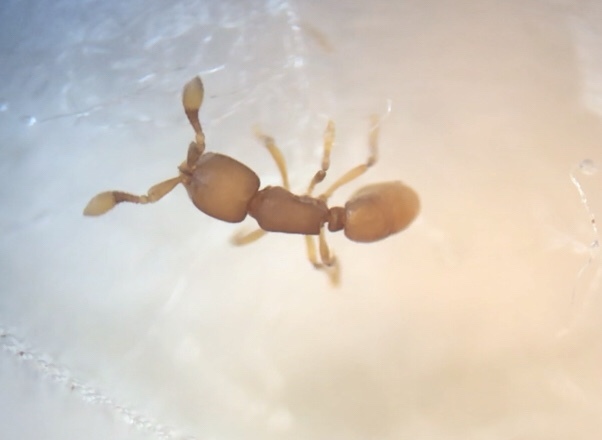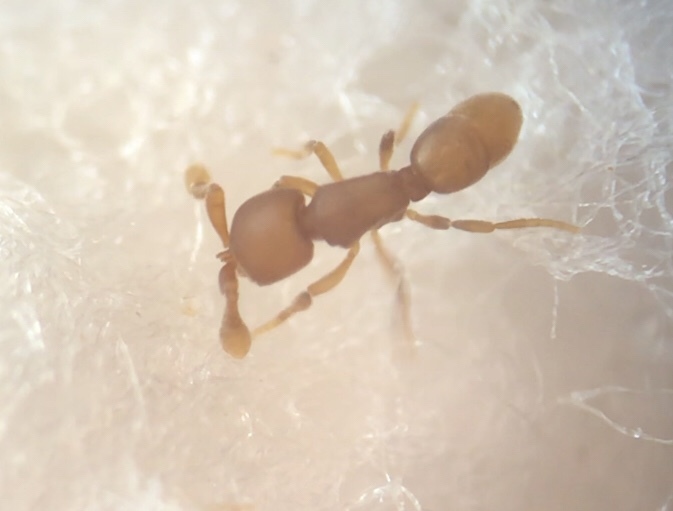My first ever time seeing this species! A single worker was found in a pine needle bed over a red clay-humus mixture at the base of an American sweetgum. Other ant species present were Brachymyrmex depilis, Nylanderia faisonensis, Crematogaster lineolata, and Aphaenogaster fulva-rudis-texana complex sp. All images can be seen on iNaturalist here. I will continue to search for the colony to make an attempt at keeping these gals, which I know is said to be extremely difficult. I'll try and see what species of arthropods are present in the area as well so I can try and narrow down what exactly it is that they eat, if I can find the colony that is. Anyways, here are some of the photos I took of this tiny, rare ant:

Similar to the relative, Proceratium, starting at gastral segment III, the segments are curled under segment II, likely used to held the carry eggs.


The prominent fused frontal lobes of this species form a sort of crest between the antennal fossae, which are visible in profile due to the fusing of the lobes.

Here she cleans the massive antennal clubs this species is known for.

The minute eye of this ant with its single facet is just scarcely visible here as a tiny speck.















